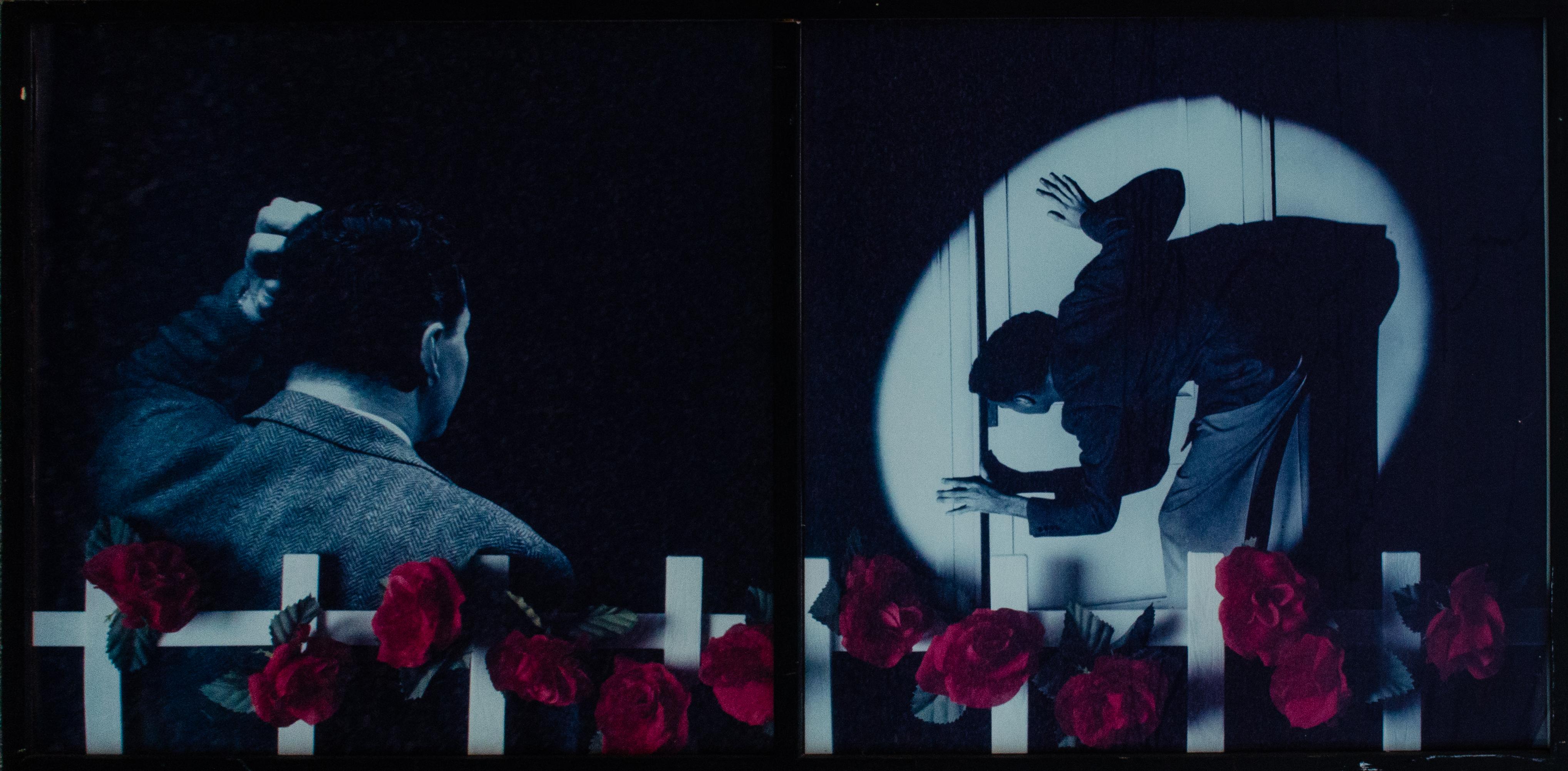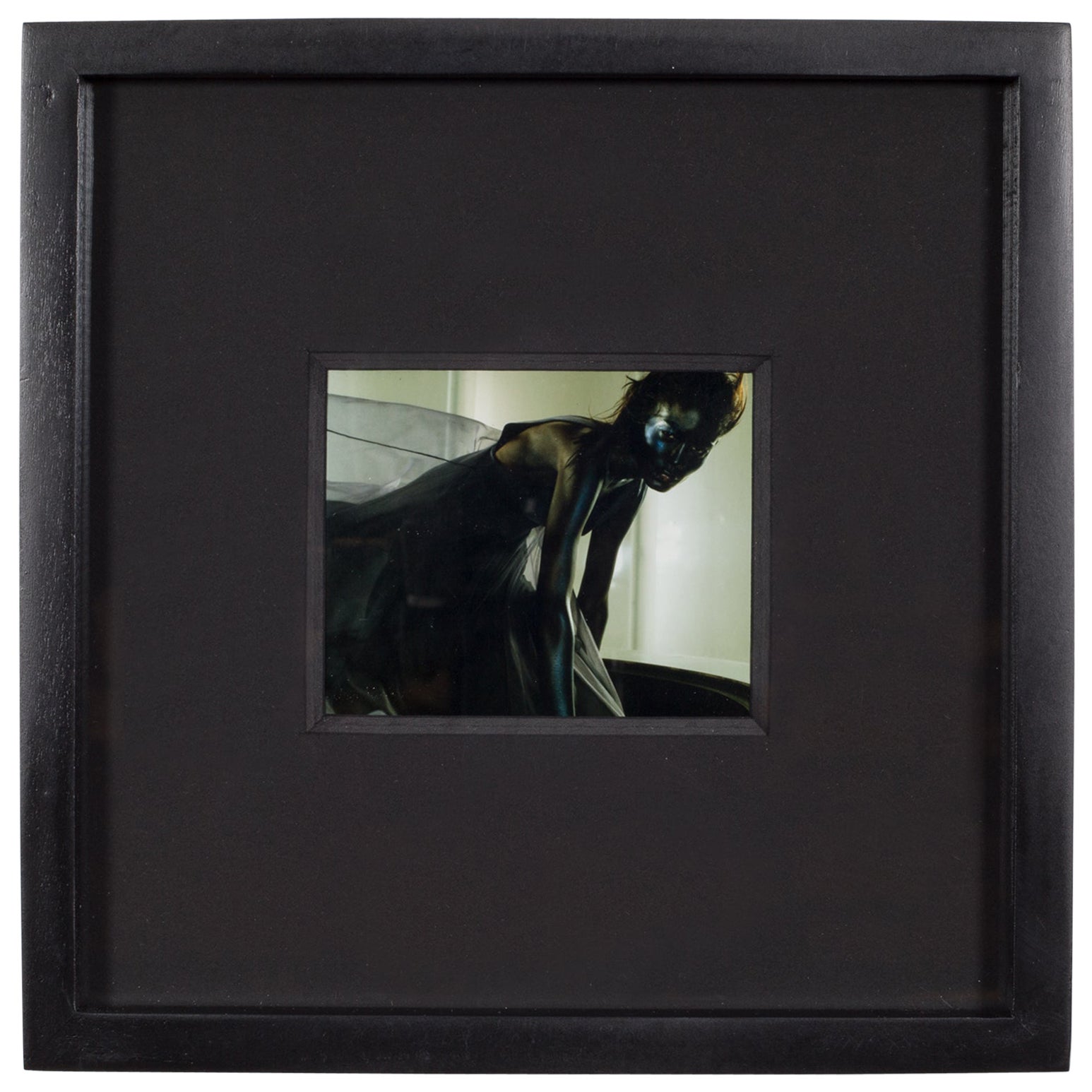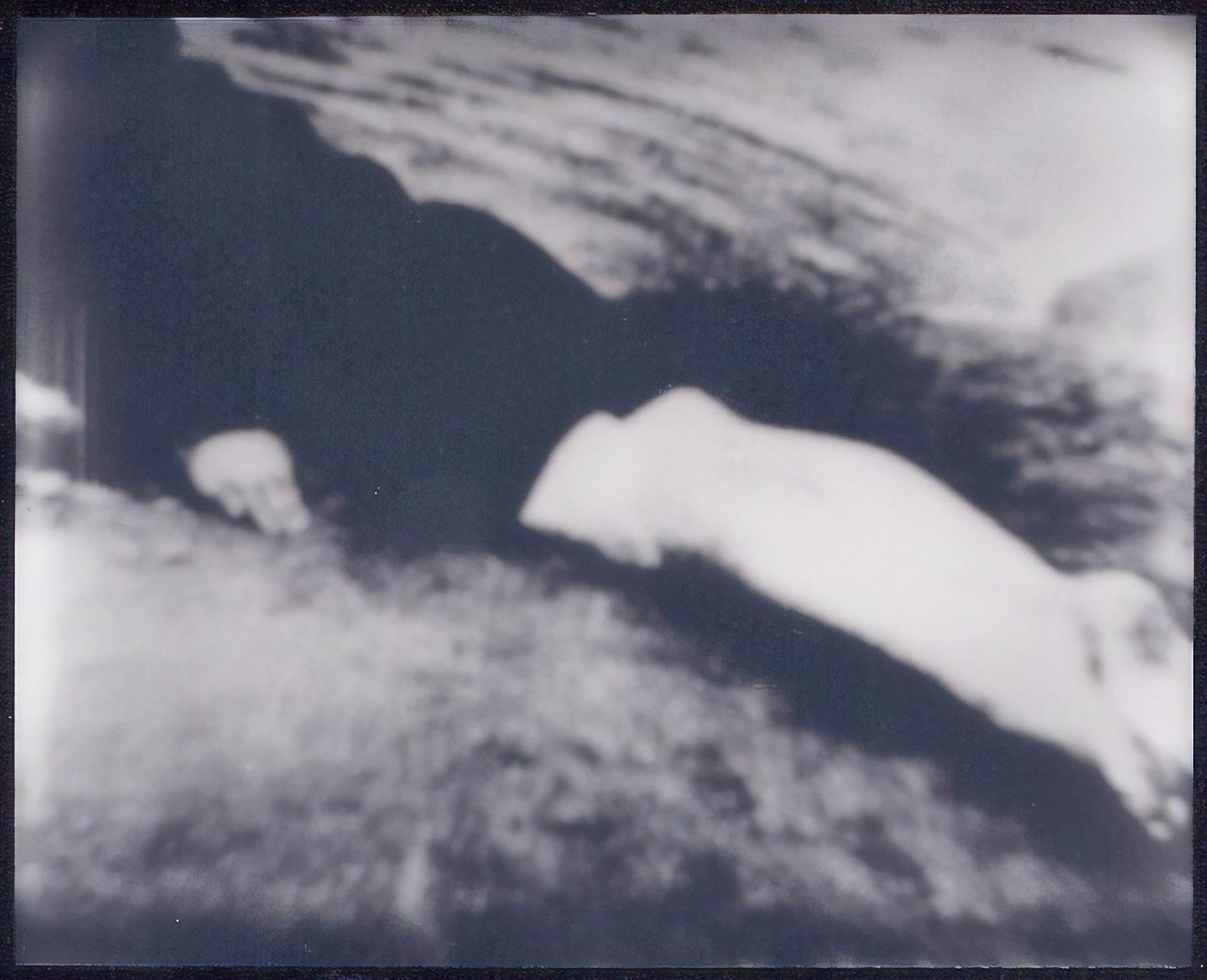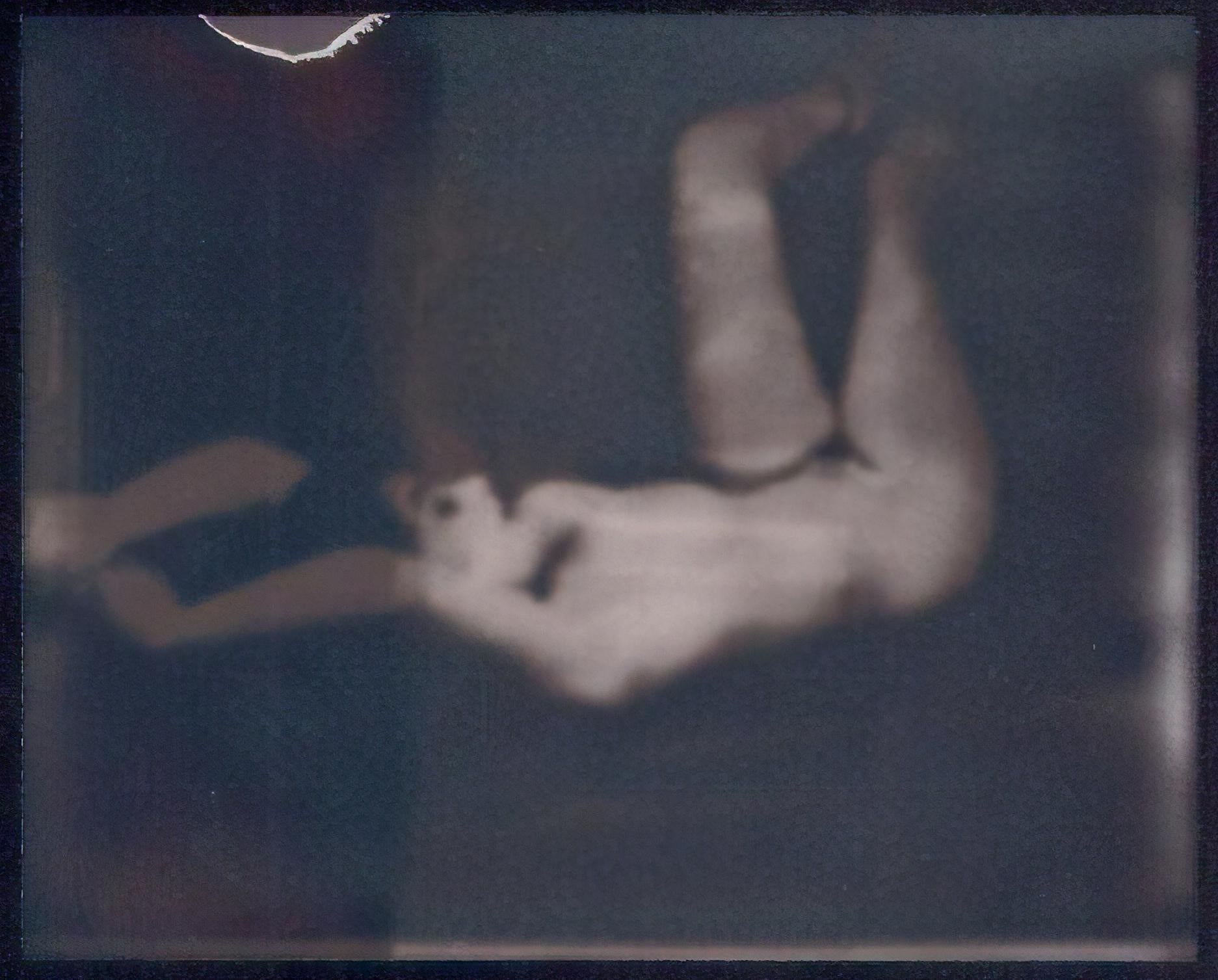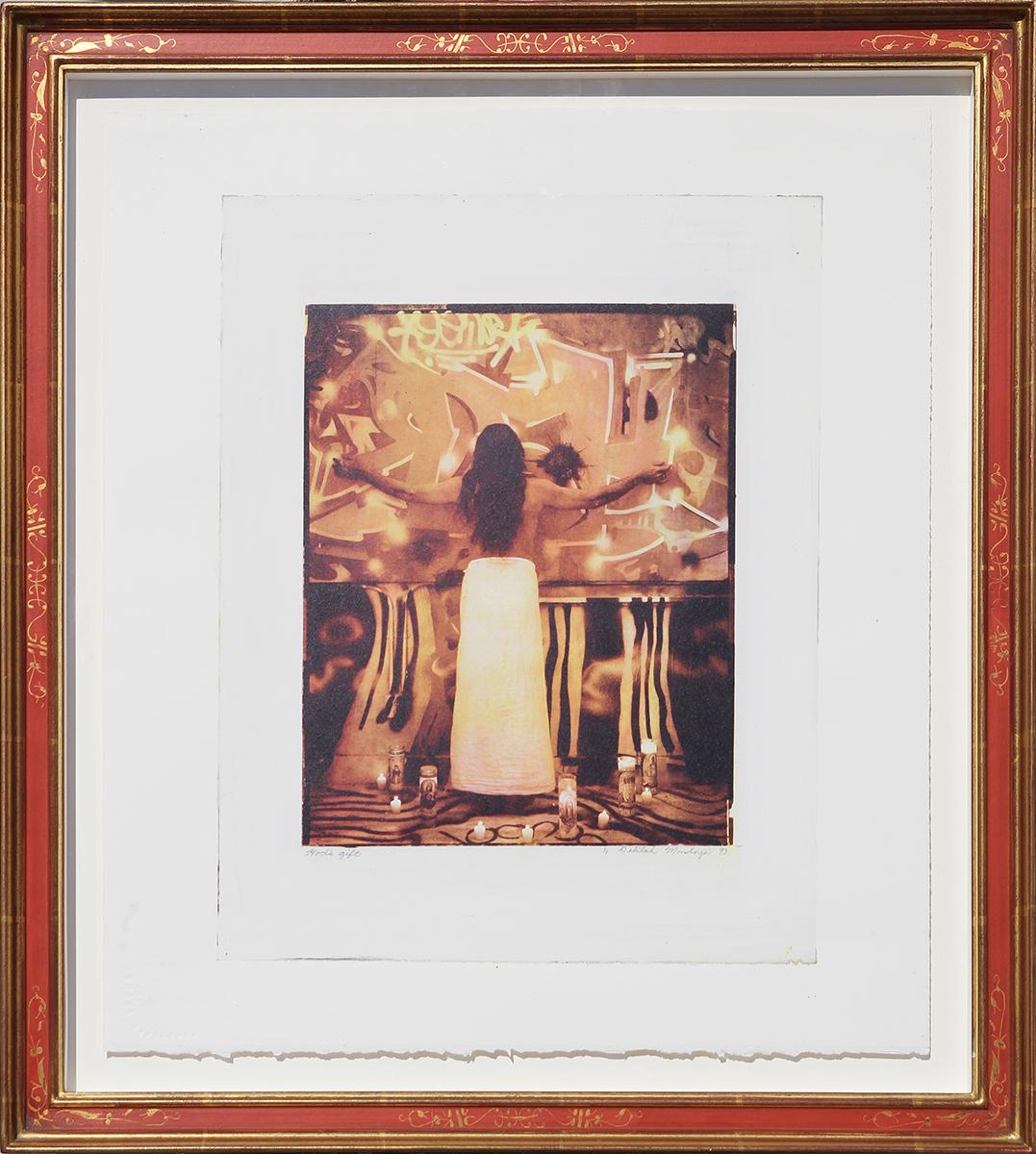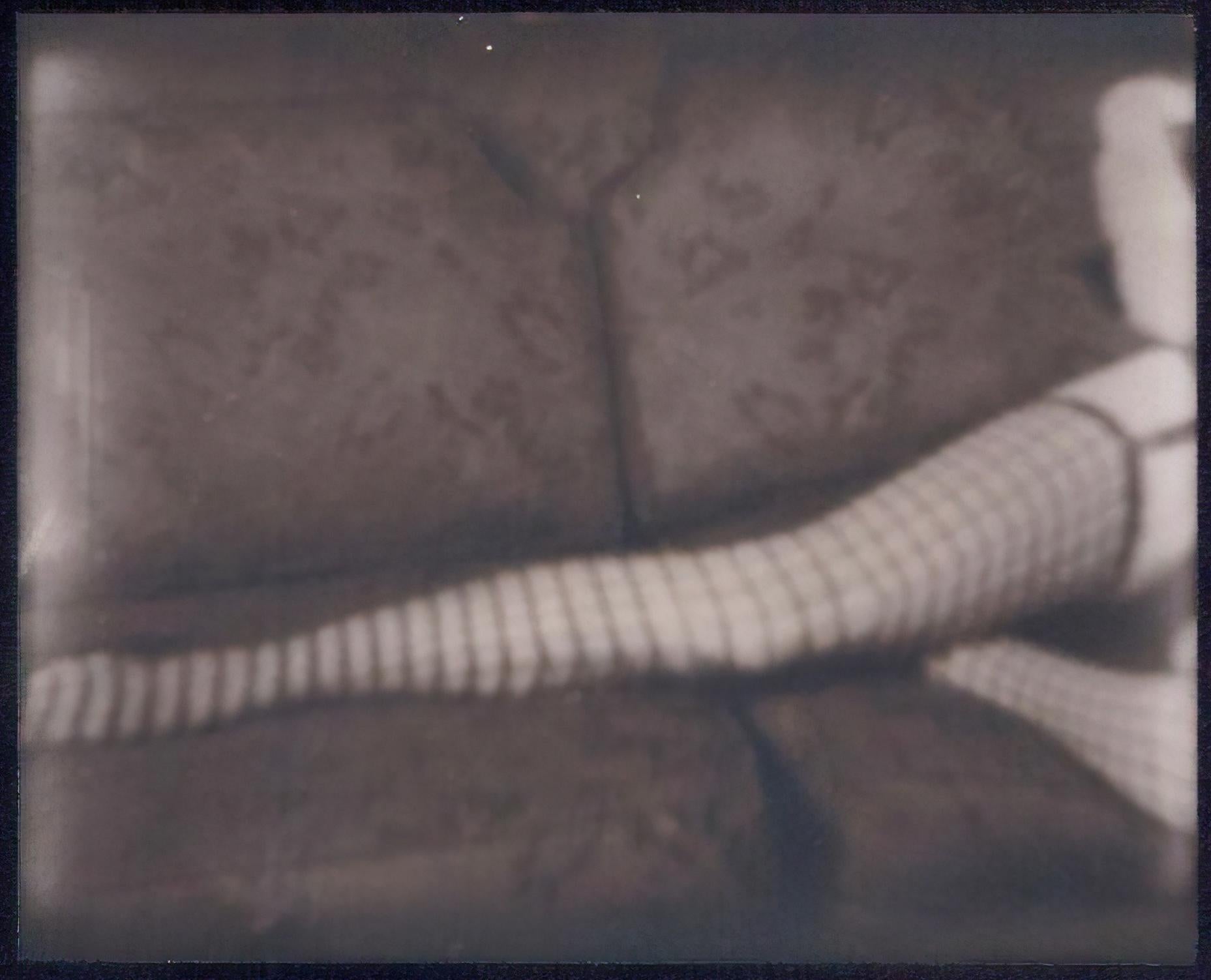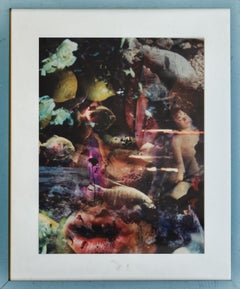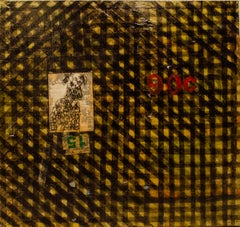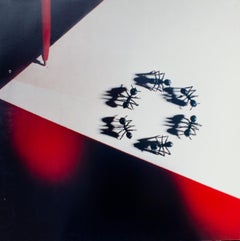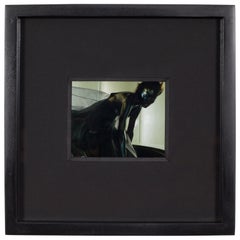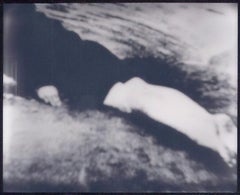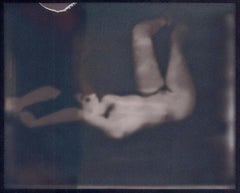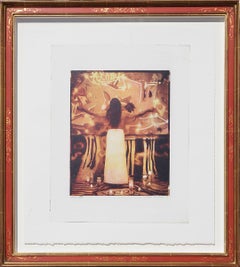Items Similar to Stephen Frailey Polaroid Print, 1988
Want more images or videos?
Request additional images or videos from the seller
1 of 7
Stephen FraileyStephen Frailey Polaroid Print, 19881988
1988
$2,400
£1,860.32
€2,115.92
CA$3,439.56
A$3,771.38
CHF 1,971.57
MX$45,169.52
NOK 24,870.95
SEK 23,328.95
DKK 15,807.23
About the Item
Stephen Frailey
Untitled, 1988
Polaroid print
Sight: 19 3/4 x 19 3/4 in.
Framed: 24 1/4 x 24 x 1 3/4 in.
Edition 2/3
Provenance:
Lieberman & Saul, New York
Stephen studied at the San Francisco Art Institute and received his BA from Bennington College. He has had solo exhibitions at 303 Gallery and the Julie Saul Gallery and group exhibitions at the Museum of Modern Art, New York; International Center for Photography, New York; and the National Museum of American Art, Washington, DC.
His work has been reviewed in the New York Times, Arts Magazine, ARTnews, Artforum, the Village Voice, and the New Yorker, portfolios have appeared in Artforum and the Paris Review. His work is in the collections of the Museum of Fine Art, Houston; the International Center for Photography, New York; and the Princeton University Art Museum.
He has received two MacDowell Colony Fellowships, a National Endowment for the Arts Grant and an Aaron Siskind Foundation Grant. He has been a visiting artist at the Donald Judd Foundation and twice been nominated for a Louis Comfort Tiffany Grant. His critical writing on photography have appeared in Artforum, Print, and Art on Paper. He was the Chair of the Graduate photography program at Bard College from 1998 to 2004, and has been the Chair of the Photography Department at the School of Visual Arts in New York since 1998. He is also the co-chair of the MPS Fashion Photography Program at the School of Visual Arts. In 2003, he founded the Auction for Photographic Education in Afghanistan to create a photography department at Kabul University. He is the co-founder of the Art+Commerce Festival in New York.
In 2007 he founded the photography magazine Dear Dave, and is its Editor in Chief.
Bio sourced from the artist's website
- Creator:Stephen Frailey (American)
- Creation Year:1988
- Dimensions:Height: 24.25 in (61.6 cm)Width: 24 in (60.96 cm)Depth: 1.75 in (4.45 cm)
- Medium:
- Movement & Style:
- Period:
- Condition:Some wear to frame and scratch to glass; needs to be remounted.
- Gallery Location:New York, NY
- Reference Number:Seller: BU41stDibs: LU2211213968612
About the Seller
5.0
Vetted Professional Seller
Every seller passes strict standards for authenticity and reliability
1stDibs seller since 2022
99 sales on 1stDibs
Typical response time: 3 hours
- ShippingRetrieving quote...Shipping from: New York, NY
- Return Policy
Authenticity Guarantee
In the unlikely event there’s an issue with an item’s authenticity, contact us within 1 year for a full refund. DetailsMoney-Back Guarantee
If your item is not as described, is damaged in transit, or does not arrive, contact us within 7 days for a full refund. Details24-Hour Cancellation
You have a 24-hour grace period in which to reconsider your purchase, with no questions asked.Vetted Professional Sellers
Our world-class sellers must adhere to strict standards for service and quality, maintaining the integrity of our listings.Price-Match Guarantee
If you find that a seller listed the same item for a lower price elsewhere, we’ll match it.Trusted Global Delivery
Our best-in-class carrier network provides specialized shipping options worldwide, including custom delivery.More From This Seller
View AllStephen Frailey Diptych, Polaroid Prints, 1988
Located in New York, NY
Stephen Frailey
Untitled (diptych), 1988
Polaroid print
Overall: 20 3/4 x 41 x 1 1/2 in.
Image: 19 1/2 x 19 1/2 in. (each)
Edition 1/5
Provenance:
Lieberman & Saul
Stephen studied at the San Francisco Art Institute and received his BA from Bennington College. He has had solo exhibitions at 303...
Category
1980s Contemporary Figurative Prints
Materials
Color
Jane Calvin Composite Photograph, 1990
By Jane Calvin
Located in New York, NY
Jane Calvin (American, b. 1938)
Untitled, 1990
Photograph
Sight: 19 1/2 x 15 1/2 in.
Framed: 26 7/8 x 22 1/2 x 1 1/4 in.
Edition 2/10
Provenance: Collection of Robert Burge, New Y...
Category
1990s Contemporary Color Photography
Materials
Color
Mystery East Village New York School Expressionist 1990s Mixed Media
Located in New York, NY
Mystery East Village New York School Expressionist
Untitled, 1995
Mixed media
44 1/2 x 47 x 2 1/2 in.
Signed, dated & inscribed verso
Category
1990s Contemporary Mixed Media
Materials
Mixed Media
Stephen Frailey Ektacolor Print, "Explanation" 1989
Located in New York, NY
Stephen Frailey
Explanation, 1989
Ektacolor print on board
28 1/4 x 28 1/4 x 1 7/8 in.
Edition 1/3
Provenance:
Lieberman & Saul
Stephen studied at the San Francisco Art Institute...
Category
1980s Contemporary Figurative Prints
Materials
Color
Surrealist Drawing of a Mythological Figure by Todd Siler
By Todd Siler
Located in New York, NY
Todd Siler (American, b. 1953)
Untitled, c. Late 20th Century
Pen/ink on paper
Framed: 31 x 25 in.
Initialed lower left: T.L.S.
The following, submitted August, 2005, is from the ar...
Category
Late 20th Century Contemporary Figurative Drawings and Watercolors
Materials
Paper, Pen
Todd Siler Original Surrealist Drawing
By Todd Siler
Located in New York, NY
Todd Siler (American, b. 1953)
Untitled, c. Late 20th Century
Pen/ink on paper
Framed: 32 3/4 x 24 in.
Signed verso
The following, submitted August 2005, is from the artist.
The Am...
Category
Late 20th Century Contemporary Figurative Drawings and Watercolors
Materials
Paper, Pen
You May Also Like
Polaroid Test Image by Denise Tarantino for Dah Len Studios c. 1990
Located in San Francisco, CA
This is an original test Polaroid image. In the pre-digital age, a Polaroid test image would verify that the model, product, and lighting would translate well on film. The studio needed to ensure that everything would translate correctly before the expense of shooting on film. Framed in a new matte black frame, this piece retains its original finish.
Creator: Denise Tarantino for Dah Len Studios.
Date of manufacture: circa 1990-1995
Materials and techniques: Photography paper, polaroid, wood, glass.
Condition: Excellent.
Dimensions: H 6.5 in., W 6.5 in., D 1 in.
History:
Dah Len, a Taiwanese fashion photographer, was in high demand, and the images created at the studio were used for high-end fashion editorials, fashion magazine ads, clothing catalogs, album covers, and pop culture publicity. The client list included publications and high end brands: Vanity Fair, W, New York Times, Interview, Details, Giorgio Armani, Kenneth Cole, Sean John...
Category
Late 20th Century American Modern Photography
Materials
Glass, Wood, Paper
$85 Sale Price
42% Off
Untitled - Polaroid, Collage, Contemporary, Photograph, 21st Century
By Josey Cary
Located in Morongo Valley, CA
Untitled -
2014, 20x24cm, Edition of 1/10.
Digital C-Print based a Polaroid Collage.
Hand-signed and numbered by the artist on the back with Certificate.
Not mounted.
Josey Cary P...
Category
2010s Contemporary Color Photography
Materials
Archival Paper, Photographic Paper, C Print, Color, Polaroid
Untitled - Polaroid, Collage, Contemporary, Photograph, 21st Century
By Josey Cary
Located in Morongo Valley, CA
Untitled -
2014, 20x24cm, Edition of 1/10.
Digital C-Print based a Polaroid Collage.
Hand-signed and numbered by the artist on the back with Certifi...
Category
2010s Contemporary Color Photography
Materials
Archival Paper, Photographic Paper, C Print, Color, Polaroid
“God’s Gift” Contemporary Photograph on Collotype
By Delilah Montoya
Located in Houston, TX
Contemporary photograph on collotype by Houston, TX artist Delilah Montoya. Photograph shows a young woman with long, dark hair with both arms stretched to the sides while surrounded by lit candles. Her back faces the camera as she faces a wall with graffiti. The scene is reminiscent of Jesus on the cross.
Titled, signed, and dated by artist. Framed and matted in a red and gold wooden frame.
Dimensions Without Frame: H 17.25 in. x W 16.13
Artist Biography: Although she was born in Texas and lived in Nebraska into her twenties, photographer and printmaker Delilah Montoya has deep roots in northern New Mexico through her mother's family. Raised by her mother, Montoya observes that women have empowered her family for five generations.
Montoya studied photography and printmaking at the University of New Mexico, where she received her bachelor's degree, master's degree, and master of fine arts. She works in a variety of two-dimensional photographic and printing processes as well as creating larger installations. The artist describes her approach as postmodernist and uses documentary strategies to interpret her own distinct vision.
Politically, Montoya is committed to exploring issues of identity in terms of a Chicano cultural context:"In my own evolving ideology I question my identity as a Chicana in occupied America, and articulate the experience of the minority woman. I work to understand the depth of my spiritual, political, emotional and cultural icons, realizing that in exploring the topography of my conceptual homeland, Aztlan, I am searching for the configuration of my own vision. " (Montoya n.d.) Montoya is committed to the expression of Chicana experience and history, but she does not consider herself as a feminist. Indeed, Montoya rejects identification as a United States-style feminist because she believes that "Feminists don't give us solidarity. As a Chicana my issues are multifaceted, not just gender, but class, race. "
The border, for Montoya, is a politically imposed construct, a part of a United States colonialist enterprise that was forced upon the Chicano community. It is the environment in which Chicano life and history unfolds. Montoya's work explores contemporary and historical issues, sometimes win a humorous twist. Her artist's book for the 1992 Chicano Codices exhibition organized by the Mexican Museum in San Francisco, Codex Delilah: a Journey From Mechica to Chicana (including text by poet Cecilio Garcia-Camarillo), traces the imaginary journey of Six Deer, a character who embodies the contact between indigenous and Spanish culture in her trip "pal norte" towards Aztlan, the "spiritual homeland of her ancestors." As she journeys to the north, the character also journeys forward in time, meeting important Chicanas from the past, including La Llorona...
Category
1990s Contemporary Abstract Prints
Materials
Photographic Paper
Untitled - Polaroid, Collage, Contemporary, Photograph, 21st Century
By Josey Cary
Located in Morongo Valley, CA
Untitled -
2014, 20x24cm, Edition of 1/10.
Digital C-Print based a Polaroid Collage.
Hand-signed and numbered by the artist on the back with Certifi...
Category
2010s Contemporary Color Photography
Materials
Archival Paper, Photographic Paper, C Print, Color, Polaroid
Living in a Dream (Till Death do us Part) - Contemporary, Polaroid, Women
By Stefanie Schneider
Located in Morongo Valley, CA
Living in a Dream (Till Death do us Part) - 2005
20x20cm,
Edition of 10,
Archival C-Print print, based on the Polaroid.
Certificate and Signature label, artist Inventory No. 9781.
Not mounted.
on offer is a piece from the movie "Till Death do us Part"
Stefanie Schneider’s Till Death Do Us Part
or “There is Only the Desert for You.”
BY DREW HAMMOND
Stefanie Schneider’s Til Death to Us Part is a love narrative that comprises three elements:
1.
A montage of still images shot and elaborated by means of her signature technique of using Polaroid formats with outdated and degraded film stock in natural light, with the resulting im ages rephotographed (by other means) enlarged and printed in such a way as to generate further distortions of the image.
2.
Dated Super 8 film footage without a sound track and developed by the artist.
3.
Recorded off-screen narration of texts written by the actors or photographic subjects, and selected by the artist.
At the outset, this method presupposes a tension between still and moving image; between the conventions about the juxtaposition of such images in a moving image presentation; and, and a further tension between the work’s juxtaposition of sound and image, and the conventional relationship between sound and image that occurs in the majority of films. But Till Death Do Us Part also conduces to an implied synthesis of still and moving image by the manner in which the artist edits or cuts the work.
First, she imposes a rigorous criterion of selection, whether to render a section as a still or moving image. The predominance of still images is neither an arbitrary residue of her background as a still photographer—in fact she has years of background in film projects; nor is it a capricious reaction against moving picture convention that demands more moving images than stills. Instead, the number of still images has a direct thematic relation to the fabric of the love story in the following sense. Stills, by definition, have a very different relationship to time than do moving images. The unedited moving shot occurs in real time, and the edited moving shot, despite its artificial rendering of time, all too 2009often affords the viewer an even greater illusion of experiencing reality as it unfolds. It is self-evident that moving images overtly mimic the temporal dynamic of reality.
Frozen in time—at least overtly—still photographic images pose a radical tension with real time. This tension is all the more heightened by their “real” content, by the recording aspect of their constitution. But precisely because they seem to suspend time, they more naturally evoke a sense of the past and of its inherent nostalgia. In this way, they are often more readily evocative of other states of experience of the real, if we properly include in the real our own experience of the past through memory, and its inherent emotions.
This attribute of stills is the real criterion of their selection in Til Death Do Us Part where consistently, the artist associates them with desire, dream, memory, passion, and the ensemble of mental states that accompany a love relationship in its nascent, mature, and declining aspects.
A SYNTHESIS OF MOVING AND STILL IMAGES BOTH FORMAL AND CONCEPTUAL
It is noteworthy that, after a transition from a still image to a moving image, as soon as the viewer expects the movement to continue, there is a “logical” cut that we expect to result in another moving image, not only because of its mise en scène, but also because of its implicit respect of traditional rules of film editing, its planarity, its sight line, its treatment of 3D space—all these lead us to expect that the successive shot, as it is revealed, is bound to be another moving image. But contrary to our expectation, and in delayed reaction, we are startled to find that it is another still image.
One effect of this technique is to reinforce the tension between still and moving image by means of surprise. But in another sense, the technique reminds us that, in film, the moving image is also a succession of stills that only generate an illusion of movement. Although it is a fact that here the artist employs Super 8 footage, in principle, even were the moving images shot with video, the fact would remain since video images are all reducible to a series of discrete still images no matter how “seamless” the transitions between them.
Yet a third effect of the technique has to do with its temporal implication. Often art aspires to conflate or otherwise distort time. Here, instead, the juxtaposition poses a tension between two times: the “real time” of the moving image that is by definition associated with reality in its temporal aspect; and the “frozen time” of the still image associated with an altered sense of time in memory and fantasy of the object of desire—not to mention the unreal time of the sense of the monopolization of the gaze conventionally attributed to the photographic medium, but which here is associated as much with the yearning narrator as it is with the viewer.
In this way, the work establishes and juxtaposes two times for two levels of consciousness, both for the narrator of the story and, implicitly, for the viewer:
A) the immediate experience of reality, and
B) the background of reflective effects of reality, such as dream, memory, fantasy, and their inherent compounding of past and present emotions.
In addition, the piece advances in the direction of a Gesammtkunstwerk, but in a way that reconsiders this synaesthesia as a unified complex of genres—not only because it uses new media that did not exist when the idea was first enunciated in Wagner’s time, but also because it comprises elements that are not entirely of one artist’s making, but which are subsumed by the work overall. The totality remains the vision of one artist.
In this sense, Till Death Do Us Part reveals a further tension between the central intelligence of the artist and the products of other individual participants. This tension is compounded to the degree that the characters’ attributes and narrated statements are part fiction and part reality, part themselves, and part their characters. But Stefanie Schneider is the one who assembles, organizes, and selects them all.
THE RELATIONSHIP BETWEEN THIS IDEA (above) AND PHOTOGRAPHY
This selective aspect of the work is an expansion of idea of the act of photography in which the artistic photographer selects that which is already there, and then, by distortion, definition or delimitation, compositional and lighting emphasis, and by a host of other techniques, subsumes that which is already there to transform it into an image of the artist’s contrivance, one that is no less of the artist’s making than a work in any other medium, but which is distinct from many traditional media (such as painting) in that it retains an evocation of the tension between what is already there and what is of the artist’s making. Should it fail to achieve this, it remains, to that degree, mere illustration to which aesthetic technique has been applied with greater or lesser skill.
The way Til Death Do Us Part expands this basic principle of the photographic act, is to apply it to further existing elements, and, similarly, to transform them. These additional existing elements include written or improvised pieces narrated by their authors in a way that shifts between their own identities and the identities of fictional characters. Such characters derive partially from their own identities by making use of real or imagined memories, dreams, fears of the future, genuine impressions, and emotional responses to unexpected or even banal events. There is also music, with voice and instrumental accompaniment. The music slips between integration with the narrative voices and disjunction, between consistency and tension. At times it would direct the mood, and at other times it would disrupt.
Despite that much of this material is made by others, it becomes, like the reality that is the raw material of an art photo, subsumed and transformed by the overall aesthetic act of the manner of its selection, distortion, organization, duration, and emotional effect.
* * *
David Lean was fond of saying that a love story is most effective in a squalid visual environment. In Til Death Do Us Part, the squalor of the American desert...
Category
Early 2000s Contemporary Color Photography
Materials
Archival Paper, Photographic Paper, C Print, Color, Polaroid
More Ways To Browse
Pierre Brissaud
Portrait Self Collage
Raoul Dufy Signed Prints
Richard Ellis
Roy Lichtenstein Signed Poster
Salvador Dali Flordali
Secession Poster
Sidney Chafetz
Steinlen Cat
Takashi Murakami Korin
Tama Janowitz
Tete Homme Picasso
The Avengers
Triple Self Portrait
Vitraux Pour Jerusalem
Walasse Ting Geisha
Wayland Moore
Whitney Poster
